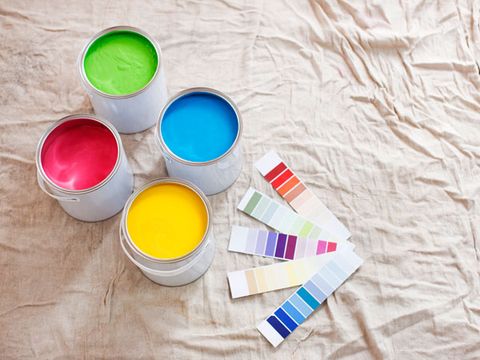You may have heard about the benefits of Interior Painting but you have no idea how to start the process. You will need to have the right tools, prepare the room properly, and follow some clean-up tips. You can also take the help of a professional painter. The following tips will guide you through the process. Keep reading to learn more about how to do Interior Painting yourself. This will help you to save money on the project. Once you know what to expect, you can start the painting project.

Painting your interior is an inexpensive and relatively easy way to update your home. New paint can make a home more comfortable and happy. If you have been living in the same color for years, you may not feel comfortable in it anymore. Paint also helps to protect your home from moisture damage and mold growth. If you don’t paint your walls properly, they can become damp, moldy, and prone to health problems. Therefore, interior paint is a good idea.
Preparation: The first step of interior painting is surface preparation. Getting the surfaces clean is essential for a successful paint job. It requires sanding, patching, and filling imperfections before painting. While this step isn’t the most fun, it is vital to the final outcome of your project. A pockmarked surface is difficult to hide with paint. You can use painter’s tape to make it easier for yourself and to avoid splattering the paint.
Paint: The cost of paint is not cheap. A gallon of paint can cost anywhere from $15 to $50. Professional painters usually purchase half the paint that homeowners buy. To get the right amount of paint for your home, measure the length and height of the wall and multiply it by the number of square feet. Higher quality paint will last longer and be easier to clean. Latex paint is generally used on the walls and is more convenient to work with because it dries quickly and leaves a smooth finish.
Paint Ingredients: Paint is composed of several ingredients. The main base is either water or oil. Water-based paints are more common and are better for interiors, while oil-based ones are for exteriors. Pigments give the paint its color. Other ingredients are additives that give it different properties. Some paints are waterproof, while others are more durable. Besides the pigments and additives, there are also resins and solvents that give the paint a certain physical effect.
If you’re wondering how to do the interior painting yourself, there are a few things to know. First, it is important to know the colors you want to use. If you’re not sure what to pick, buy a small sample can of paint and try it out on a poster board or wall first. Look at it several times throughout the day as the light changes, and make sure you like it before you commit to it.
There are several types of brushes available. Most professionals use natural-bristle brushes for oil-based paints. For all-purpose use, however, professionals recommend synthetic brushes made from nylon or polyester or a combination of the two. Poly brushes tend to be stiffer and are best for textured or exterior work. A good rule of thumb for interior painting is to use softer nylon brushes. This will allow you to cut corners and avoid overlapping the paint.
Purchasing quality paint tools is essential, but you can also use inexpensive ones. For instance, a five-gallon bucket is ideal for larger spaces. It helps you mix paint and get a consistent color without mixing multiple gallons. You can also invest in rollers and an extension pole. Then, combine the gallons of paint to ensure the colors match. The paint will dry faster if you have a friend or partner to help you.


